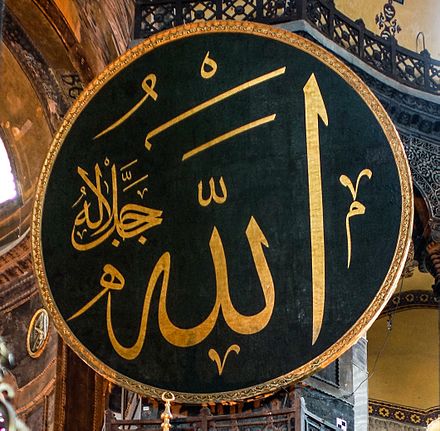The concept of Pul Sirat holds great significance in Islamic beliefs about the afterlife. This bridge, which every soul must cross after the Day of Judgment, represents an important test of faith and righteousness. In this article, we will explore what Pul Sirat means, its importance in Islamic teachings, and how understanding it can help us lead better lives.
What is Pul Sirat?
Pul Sirat is described as a bridge that spans over Hell (Jahannam) and leads to Paradise (Jannah). The word “Pul” means bridge, and “Sirat” means path. Together, they form the concept of a pathway that every person must cross in the afterlife. This bridge is said to be thinner than a hair and sharper than a sword, making it a challenging journey that reflects one’s life and deeds.
The Significance in Islamic Teachings
In Islamic tradition, Pul Sirat represents more than just a physical bridge. It symbolizes the straight path that Muslims are encouraged to follow in their earthly lives. The Quran often mentions the “straight path” or “sirat al-mustaqim,” which believers ask for guidance towards in their daily prayers.
The bridge serves as a powerful reminder that our actions and choices in this world have consequences in the hereafter. It encourages believers to stay mindful of their conduct and strive to live according to their faith’s teachings.
Descriptions of Pul Sirat in Religious Texts
Various Islamic sources provide detailed descriptions of Pul Sirat. According to hadith (prophetic traditions), the bridge will have different levels of difficulty for different people. Those who lived righteous lives will find it easier to cross, while those who strayed from the right path will face greater challenges.
Some descriptions mention that the bridge will be:
- Darker than the darkest night for some
- Illuminated like daylight for others
- Different in width for different people
- Equipped with hooks and thorns that may catch those who deserve punishment
The Journey Across Pul Sirat
The crossing of Pul Sirat is described as a profound experience that varies for each person. According to Islamic teachings, people will cross the bridge at different speeds:
- Some will pass like lightning
- Others will cross like the wind
- Some will move at the pace of running horses
- Others will walk normally
- Some will crawl
- And some may slip and fall
The speed and ease of crossing are said to depend on the person’s deeds and faith during their worldly life.
Preparing for the Cross
One of the most encouraging aspects of understanding Pul Sirat is that we can prepare for it during our lifetime. Here are ways to strengthen ourselves for this important journey:
1. Building Strong Faith
A strong foundation of faith serves as the primary preparation for crossing Pul Sirat. This includes:
- Regular prayer and worship
- Study of religious teachings
- Reflection on divine signs
- Maintaining a connection with God
- Seeking knowledge about religion
2. Performing Good Deeds
Good actions in this life are said to transform into light that will illuminate the path across Pul Sirat. These include:
- Helping others
- Being kind and compassionate
- Fulfilling obligations
- Supporting family and community
- Giving charity
- Spreading peace and goodwill
3. Developing Moral Character
Strong moral character helps make the crossing easier. Important traits include:
- Honesty and truthfulness
- Patience and perseverance
- Humility and gratitude
- Forgiveness and mercy
- Self-control and discipline
Common Questions About Pul Sirat
Many people have questions about this important concept. Here are some common queries and their answers:
Will Everyone Cross the Bridge?
According to Islamic teachings, every soul will face the bridge. However, the experience will differ based on their deeds and faith.
What Help Will Be Available?
Islamic traditions mention that:
- Believers’ good deeds will help light their way
- Prayer and charity will assist in the crossing
- Faith will provide stability and courage
- Divine mercy will be present for the righteous
How Can We Prepare?
The best preparation includes:
- Strengthening faith through regular worship
- Performing good deeds consistently
- Developing strong moral character
- Helping others and building positive relationships
- Seeking knowledge and understanding
The Encouraging Aspects of Pul Sirat
While the concept of Pul Sirat might seem daunting, it contains many encouraging elements:
Divine Mercy
Islamic teachings emphasize that God’s mercy is vast and encompasses everything. This mercy will be present during the crossing of Pul Sirat, especially for those who showed mercy to others in their worldly lives.
Opportunity for Preparation
We have the chance to prepare for this crossing through our daily actions and choices. Every good deed, kind word, and positive action can help make our journey easier.
Clear Guidance
The concept provides clear guidance on how to live a good life. It offers practical steps and moral principles that can lead to success both in this world and the next.
Conclusion
Pul Sirat represents more than just a bridge in the afterlife. It serves as a powerful metaphor for the journey of life itself. By understanding and applying its lessons, we can:
- Live more meaningful lives
- Build stronger relationships
- Create positive change
- Prepare for the future
- Find peace and purpose
The concept reminds us that while the path may be challenging, we have the ability to prepare for it through our daily choices and actions. It encourages us to live consciously, act kindly, and maintain hope in divine mercy.
Remember that every small step toward goodness counts, and every positive action brings us closer to successfully crossing our own bridges in life. By focusing on spiritual growth, moral development, and helping others, we can face life’s challenges with courage and confidence.
The journey across Pul Sirat begins with the steps we take today. Let us move forward with hope, determination, and faith, knowing that our sincere efforts and good intentions will light our path, both in this world and the next.







